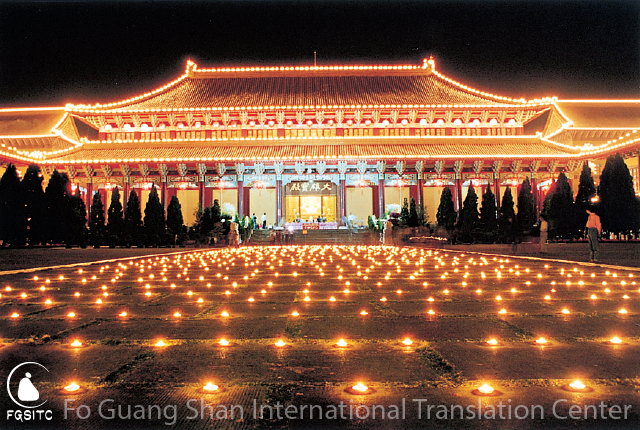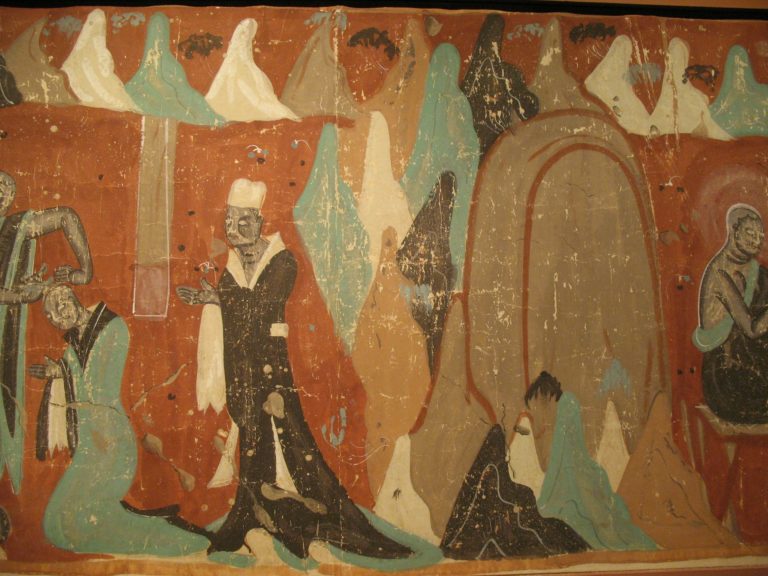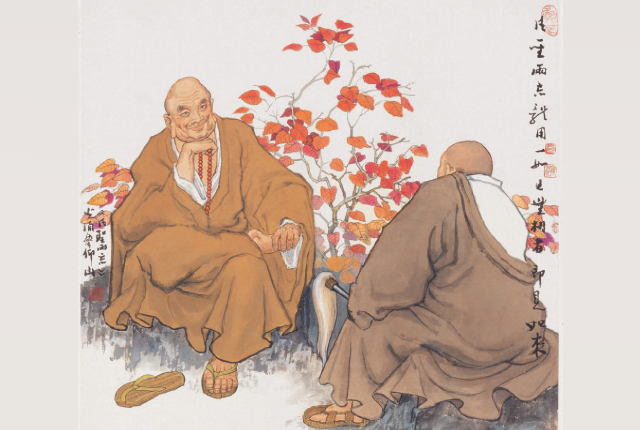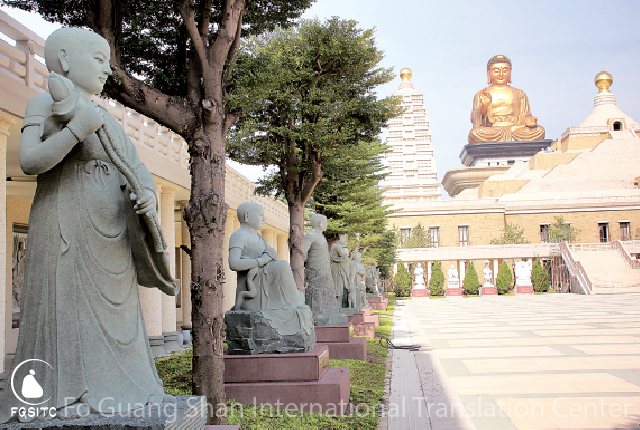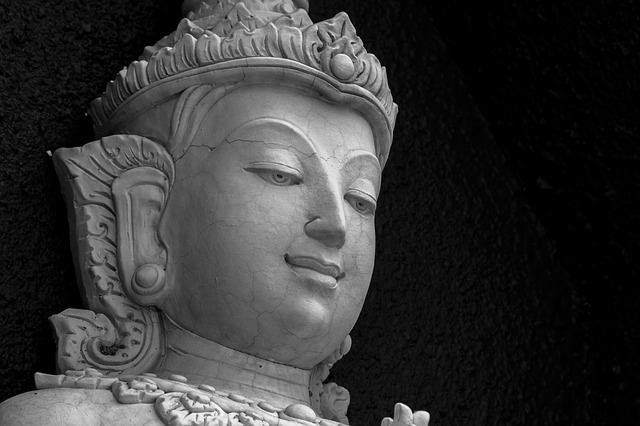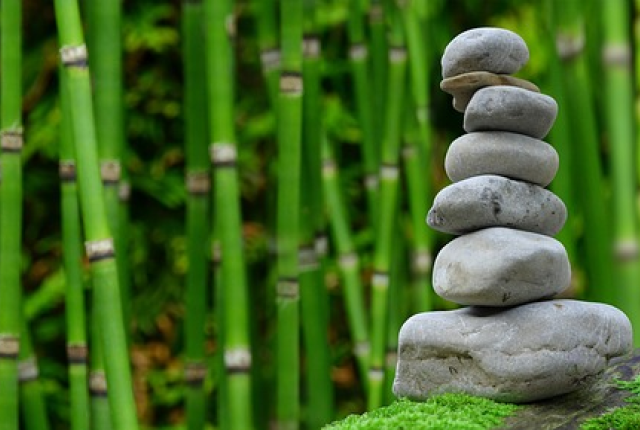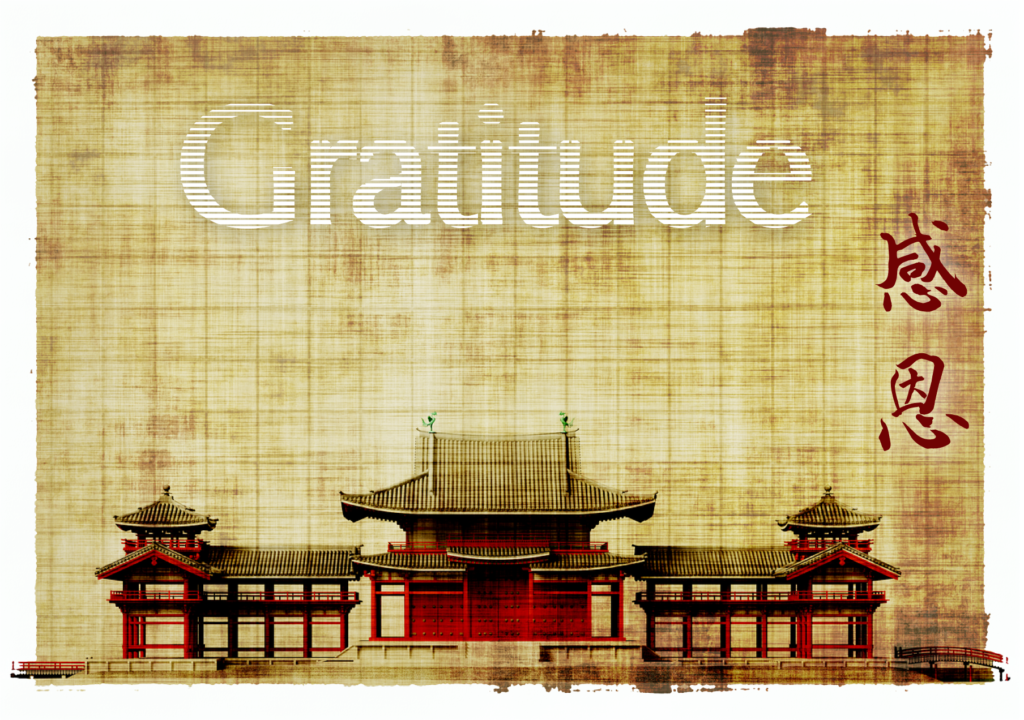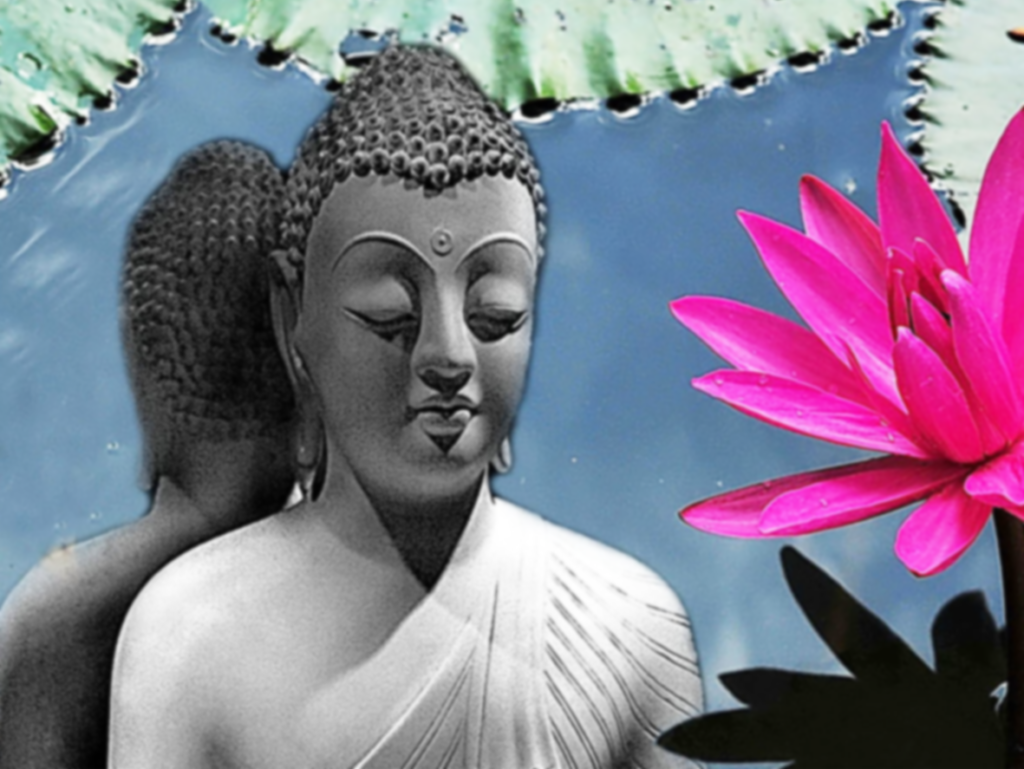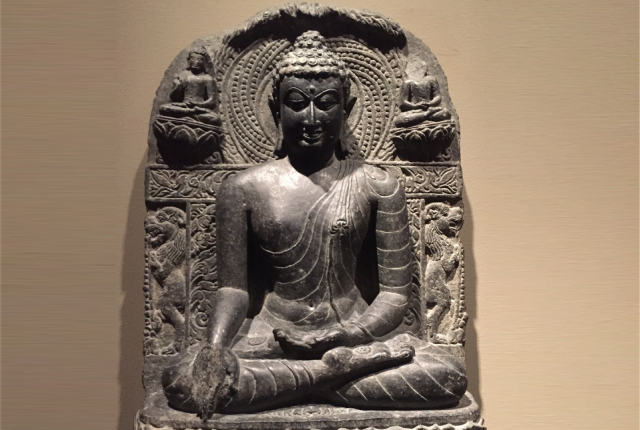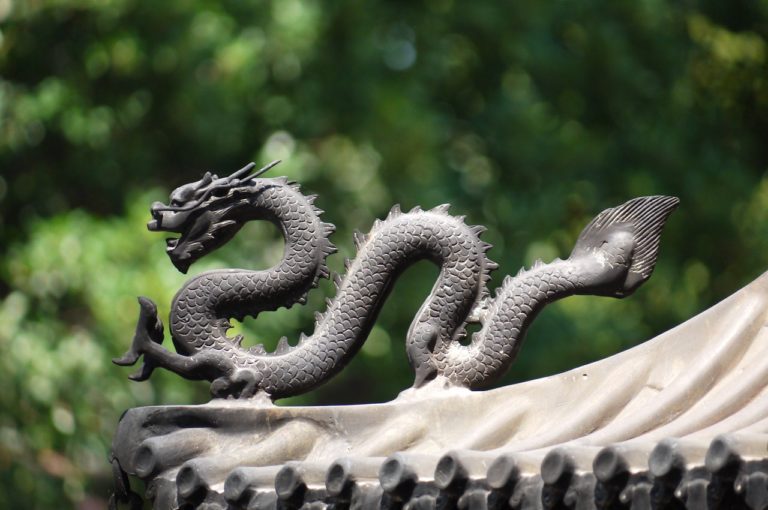Many different sutras contain descriptions of the thirty-two marks and eighty characteristics, each with slight variations.
The eighty notable characteristics are:
- Top of his head not visible to others.
- A prominent nose with well-concealed nostrils.
- Eyebrows shaped like a new moon.
- Large, round ears that are long and thick.
- A strong body.
- Closely-fit bones.
- When he turns, his whole body turns, just like a majestic elephant.
- Leaves imprints as he walks.
- Red fingernails.
- Full, rounded knees.
- A clean body.
- Soft, smooth skin.
- Straight, erect posture.
- Round, slender fingers.
- Fine fingerprints.
- No visible veins.
- Well-concealed heel bones.
- A supple, smooth body.
- A round, full body.
- A straight, steady, focused gait.
- A dignified appearance.
- Peaceful and calm deportment.
- A stable posture when standing.
- A majestic presence.
- A pleasing appearance.
- A perfectly sized face.
- Unperturbed demeanor.
- A beautiful, complete face.
- Red lips.
- A voice that carries.
- A deep, round navel.
- Hair that curls to the right.
- Long arms that reach below the knees.
- Flexible arms and legs.
- Clear, straight palm-lines.
- Fine, long palm-lines.
- Unbroken palm-lines.
- Brings joy to those who see him.
- A perfect, broad face.
- A face full like the moon.
- Peaceful, joyful speech.
- Fragrant pores.
- Fragrant breath.
- Appearance awe-inspiring like that of a lion.
- Gait steady like that of an elephant.
- Steps airy like that of a goose king.
- A well-formed forehead.
- A clearly audible voice.
- White teeth.
- A bright red tongue.
- A long, thin tongue.
- Thick body hair.
- Soft, clean body hair.
- Big, wide eyes.
- A clean, unobstructed airway connecting the seven openings of the face.
- Lotus-colored hands and feet.
- A well-concealed navel.
- An abdomen that does not protrude.
- A well-sized abdomen.
- Steady, stable body.
- A sturdy, stable body.
- A large frame.
- Soft, clean hands and feet.
- A ten-foot halo.
- A glowing halo.
- Treats all sentient beings equally.
- A majestic appearance.
- Does not slight any sentient being.
- An even voice.
- Able to vary his teaching methods.
- Teaches according to the circumstances.
- Though speaking with one voice, sentient beings receive many teachings according to their needs.
- Adapts his teachings according to the spiritual maturity of the listener.
- Can be seen with endlessly different appearances.
- An appearance one wishes to see again.
- Long, healthy hair.
- Long, neat hair.
- Neatly curled hair.
- Dark-colored hair.
- A virtuous appearance.
This list is from Seeing the Buddha, by Venerable Master Hsing Yun.
It seemed that I had to do everything for Buddhism. For Buddhism, I have to only set the tone and not become the master, hand over my physical body to the temple and give my life to the Dharma protectors, heavenly beings and nagas, and making the aspiration to head out for Buddhism, striving to move Buddhism toward humanity and society. It seemed then that Read more
Being patient is an art, and being persistent is a kind of hope. Influenced by today’s instant culture, modern people tend to expect instant results in anything they do. Practitioners want to have attainment in this life, scholars want to become instant laureates in their fields, and entrepreneurs want to gain a huge fortune overnight. As the saying goes, “A flower picked before its time Read more
What, exactly, is the meaning contained within this gong’an? For instance, some have asked, what are people like? This is a very difficult question to answer because if there are things they are like, then there are things they are not like. If we answer that people are like ghosts, then there are also people among ghosts. If we say ghosts are like people, then Read more
In devoting my life to Buddhism, in order to keep Buddhism current with the advances in society, in terms of thoughts, I am always making improvements at every hour and moment; in terms of practice, I am constantly and continuously making adjustments. Even though I know that Buddhism must be reformed, innovation never comes into being in the heat of the moment. My “silent revolution” Read more
Compassion is the father, the bodhi mind the mother. Good methods are like friends because they save all sentient beings. — Great Collection of True Dharmas Sutra Compassion Is the Father Compassion removes suffering and creates joy. The sutra says, “The power of the Dharma is beyond expression. Nothing can obstruct compassion.” Compassion is the root source of all good. Compassion is the heart of Read more
True stature is not created by form or ornament; words spoken out of jealousy and greed oppose it. Only when evil has been stopped at its roots, and when there is wisdom without anger is there true stature.— Dharmapadavadana Sutra The False Stature of This WorldEveryone wants to be well regarded by others. However, in seeking true stature, people too often waste their time in Read more
Though the worlds that we see are fundamentally a product of our own minds, they usually do not appear this way to us. Like images in an intense dream, our perceptions appear to be wholly real to us, and not to have been generated by our own mental activity. For this reason, the Buddha taught many ways to help us comprehend the true nature of Read more
We all have our share of headaches and heartaches. Physically, we all have to face aging, sickness and death. Mentally, we have to deal with problems arising from greed, hatred and ignorance. The Chinese have a saying that aptly describes our predicament: “Heaven and hell sometimes end; the threads of sorrow continue forever.” Our afflictions are as deep as the dark blue sea and are Read more
When someone benefits us even a little,we should repay them with all our hearts.Even if someone is angry with us,we should always treat them well.— Upasakasila Sutra Gratitude Is Fundamental to BuddhismA natural outgrowth of heartfelt gratitude is the desire to repay others for the kind things they have done for us. Having the feeling of being indebted to others is a sign that we are Read more
What is the fastest thing in the universe? Of course, everyone knows it is light, which moves at three hundred thousand kilometers per second. However, in Buddhism, the fastest thing is not light but a person’s mind. The speed of mind is several hundred times faster than light and is not limited by time and space. In a flash you can think of Li Bo, Read more
Though sitting meditation was given to us from the ancient past it is a way for modern people to lead happy lives. Sitting meditation allows us to dispel the pressures of daily life that come from the mind’s confusion and a mistaken understanding of phenomena. Practicing sitting meditation quiets the mind and stills our thoughts so that we can recover our intrinsic nature. Sitting meditation Read more
If we want to understand what the Dharma teaches us about building affinity and living in harmony with others, we must first understand the four great all-embracing virtues. The Buddha teaches that for us to realize our true capacity of connecting with and serving our fellow citizens, we have to first build a good rapport, and the four virtues are tools to that end. The four Read more

